Along the Path

Emma Colbert’s animal portraiture draws inspiration from the splendor of nature, the play of light, and an understanding of self.
By Tim Saunders
“Do not go where the path may lead; go instead where there is no path and leave a trail.”
—Ralph Waldo Emerson
Emma Colbert, of Northern Ireland, has fully embraced Emerson’s words. Her combined love of nature, animals, and art propelled her on a one-year journey throughout Ireland eight years ago, subsequently followed by three years of pre-pandemic travel throughout Europe. It was on these sojourns that she honed her talent to observe, photograph, and paint the animals, wildlife, and landscapes she adored. That, combined with her proficiency for heartfelt pet portraiture, fueled her creative endeavors.
Today, Colbert has settled in southern Spain with her partner/fellow companion, Andrew, and their two dogs and two cats. There, she continues her highly detailed work inspired by the beauty of nature and light—and leads others on their own artistic paths—all while being true to herself.

About the Journey
As a child, Colbert toyed with the idea of becoming a musician when she grew up. Once in her mid-teens, however, she realized that she much preferred working alone in an art studio to being on stage. “I still play piano, a little guitar, and sing,” she says, “but I purposefully keep it as a hobby. My creative focus switched to art, and that’s the path I chose for further education.”
Colbert comes from a creative family, though, which has been helpful—and Andrew is a musician, which is also a plus. “We each have our own skills that we’ve worked on over many years,” she says, “and having the support and understanding of a hardworking family has definitely been a huge help to me.”
Despite having such a strong support system, Colbert’s path to becoming an artist didn’t follow the route originally mapped in the pursuit of her post-secondary major.

About Discovering Pastel
Colbert graduated from the University College for the Creative Arts at Maidstone, in England, with a Bachelor of Arts degree in honors illustration in 2007. But she left university unsure that illustration was quite the right art style, or fit, for her. “I felt a bit deflated coming away from there and was ready to give up,” she says.
Still, Colbert found that she couldn’t forsake the artistic path and chose to blaze her own. “Luckily, I had some great inspiration in my early days of art education, and the helpful influence of a couple of teachers, in particular, has stayed with me,” she says.
Pastel became her medium of choice. “The first time I tried pastel, I fell in love,” recalls Colbert, whose older sister had also studied art and introduced her to the medium. “Pastel is so hands on; there’s just something so immediate about the way the pigment is applied. And there’s no paintbrush cleaning afterward. It suits me perfectly.”
And so, after university, Colbert “accidentally fell” into painting portrait commissions and producing her own series of wildlife paintings in pastel. “I’ve always loved painting animals, and pastel is the perfect medium for the subject,” she says. “I can’t imagine achieving high definition in the fur, yet a convincing softness, with any other medium.”
The work carried the artist into the career she has today. As an introverted person, she notes that the decision to go more public with her art was a tough one, but she forged ahead anyway. “In the beginning, I did everything I could to network and get my work seen,” she says, which included exhibiting in the Pastel Society of Ireland (PSI). Now an elected member of PSI, Colbert counts the organization as vital to the establishment of her career. “PSI was a big help; I won my first set of Unison pastels the first time I exhibited,” she notes. “The society really helped to kick-start my career. I still enjoy sending a painting or two over for certain exhibitions.”

About Subject Matter
In the early years, Colbert’s subjects were determined primarily by the requests she received from her commission clients. She painted the intricately detailed portraits on neutral backgrounds so that the subjects themselves would take center stage. When she wasn’t painting pet portraiture, Colbert would occasionally work on a wildlife painting. They were a departure from her usual work—“more brightly colored and on more experimental backgrounds,” she says.
These days, as Colbert takes on fewer commissions so that she can focus on subjects of her choice, she’s even more immersed in creative exploration. “I have more freedom to focus on creating images that inspire me,” she says. “At the moment, I’m painting small landscapes featuring one of my dogs, Lola, a Bodeguero. The paintings are a big step away from my detailed portraits, and I’m enjoying experimenting with different methods.”

Call for Entries!
Put your best paw forward and enter our Best in Show | Pets Competition. Share your creative portrayals of cats, dogs, lizards, birds—all pets (and all painting and drawing media) are welcome. The art competition is open to U.S. and international artists. Enter by December 19, 2023, to take advantage of the Early Bird Deadline.
About Reference Photos
To capture the essence of her animal subjects—whether domesticated or wild—Colbert relies on reference photos. “Given the nature of my work and my choice of subject matter, it makes sense to use still images of animals,” she says. “I don’t usually paint from a photo exactly as it appears because I enjoy mixing and matching references.”
In the past, Colbert has snapped many of the reference images of the pets she has painted. She also enjoys wildlife and landscape photography, which has provided her with the other photo references she uses. “Lately, though, I’ve been enjoying working from life in my studio,” she says. “I’ve done a few still life paintings and have enjoyed that process so much.”

About Materials
Colbert’s preference for pastel sticks leans to the medium-soft pastel range, and she cites a few she uses from that category: Unison, Mount Vision, Terry Ludwig, and Blue Earth. “Each type of pastel is good for a different job,” she notes. “If you’re just starting out, it’s a good idea to look at the styles of artists you like and experiment with the pastels they’re using for a similar effect.”
Her current workload has enabled her to broaden the range of materials she uses to include soft and hard sticks and pastel pencils. Painting with them en plein air is on Colbert’s to-do list for the future. Of equal importance to Colbert’s painting kit is paper selection. “A good-quality paper will transform a work,” she notes. “Once I moved to coated papers like Hahnemühle Velour, Pastelmat, and Fisher 400, my work was so much better. I need a paper that can handle multiple layers and not let the pigments turn into a muddy mess when creating details.” Her surface selection advice for other pastelists? “Experiment with different papers,” she says, “because the right paper for you will make all the difference.”

This article originally appeared in Pastel Journal. Subscribe now so you don’t miss any great art instruction, inspiration, and articles like this one.
About Color Theory
Colbert says that her creative inspiration derives from her affinity for Impressionism. “That particular art movement taught me the most about color theory,” she says. “After I’d been struggling as a portrait artist for a while, color theory clicked, and my art went through the most dramatic evolution.”
She says that impressionism—characterized by small, visible brushstrokes, unblended color, and emphasis on the depiction of natural light—“sent me down a path I’m still joyously exploring.” She’s especially appreciative of how the Impressionists used color so deliberately and intentionally. “Most obvious are the Pointillists—Georges Seurat, Paul Signac, and Henri-Edmond Cross—who laid unmixed dots of color next to one another and let the viewer’s eyes do the ‘mixing,’” she says.

About Change & Balance
“My typical workday now looks very different compared to those at the beginning of my career,” Colbert says. “Back then, I painted solidly for many hours at a time. I also fit in as much promotion as possible, including online marketing, market stalls and events, exhibitions—anything and everything I could think of! My days were very busy, and I took little time off, but I enjoyed it.”
While the pandemic may have changed the way many artists worked—forcing them to shift quickly to hosting and taking art instruction online—Colbert had already begun heading down that virtual path. “I’m very fortunate that in the years leading up to the pandemic, I was doing many of the things I’m doing now,” she says. “I had already moved much of my work online to accommodate my travels throughout Europe. And, I had started making video tutorials.”
Nowadays, Colbert paints less frequently, primarily due to the requirements—and success—of her subscription-driven Patreon channel. “It has changed my working life, and I’m incredibly grateful that so many people like my work enough to come and learn from me,” she says. “It’s their support that makes my work-life what it is now.”
She continues, “I’m filming for my channel while I paint, which interrupts the creative flow for regular stops, but it’s something I’ve gotten used to.” The business end of the channel—email and video correspondence, video editing, audio recording, article writing, and art critiques—requires much of her time. “The list is endless,” she says.
With this in mind, Colbert emphasizes one of her primary philosophies: “There should be a work-life blend,” she says. “I believe that’s the key to every artist’s longevity. Although I enjoyed working so hard at the beginning of my career, I really didn’t have much of a life outside art.” Colbert says she’s now better at giving herself the time and space she needs, “but it can be incredibly hard to take time off.”
She has advice for other artists struggling to find the right work-life balance. “It’s something you need to practice,” she says. “When you run your own business, you may feel guilty about leaving the helm to rest, but burnout is a real thing. I want to avoid experiencing it again, and I imagine others do, too.”

About Artistic Evolution
Given all that she has implemented to propel her career forward, Colbert has arrived at a new, reoriented outlook. “I’m now less hungry for success,” she says. “I value the time I spend at my easel, but I also value the time I spend on other aspects of my life.”
Over the coming year, Colbert would like to spend more time at the easel, all the while continuing to focus on that ever-important work-life balance. “I’ve been trying not to take on too much in advance, and now I simply enjoy working on painting ideas I’ve had for many years,” she says. “My aim has always been to share all my experiments in the hope that it helps other artists on their own creative journeys.”
Ode to a Loved One
As an ambassador for Unison Colour, Colbert designed its animal pastel sets that feature her name and her painting, The Sunny Spot, which depicts her miniature long-haired dachshund, Brocci. “I’m so proud of that,” she says. Having Brocci immortalized in that way is especially poignant, as the canine recently passed away after the pair spent 16 years together. “I’ve painted entire series of her, some of which I’ve sold, some of which I’ll hold onto forever,” Colbert says. “In Sun Trap, she’s in our home when we lived in Belfast. She inspired one of my better-known YouTube demos, ‘Sleeping Dachshund.’ I’m comforted that she’ll live on through the many paintings I did of her and through other artists’ paintings of her, too.”
Colbert says that the act of honoring beloved family members is one of the things she loves most about painting pet commissions. “I’ve given so many people that memory on their wall to honor their pet after they’ve gone,” she says. “I’ve felt incredibly lucky to be able to do that with Brocci. My paintings are like having a little piece of her still in my home.”
Enjoying this article? Sign up for our newsletter!
Meet the Artist
Emma Colbert (emmacolbertart.com; patreon.com/EmmaColbertArt), originally from Northern Island, is a painter, illustrator, and instructor who specializes in animal and wildlife subjects. She’s an elected member of the Pastel Society of Ireland and an ambassador for Unison Colour pastels. Her work can be found in galleries in Northern Ireland. Visit Emma’s Patreon page.
Meet the Author
Tim Saunders (tasaunders.weebly.com) is an artist and the publisher of Contemporary Artist and hosts the In Conversation podcast. He’s a photographer and a painter who produces naive oil works under the nom de plume, Ted Wates.
From our Shop





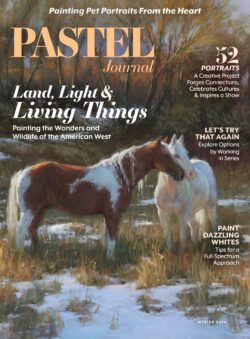
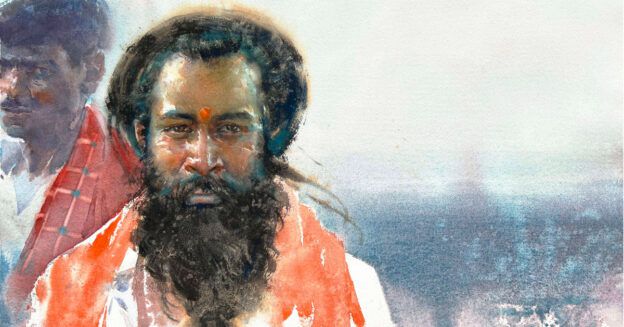
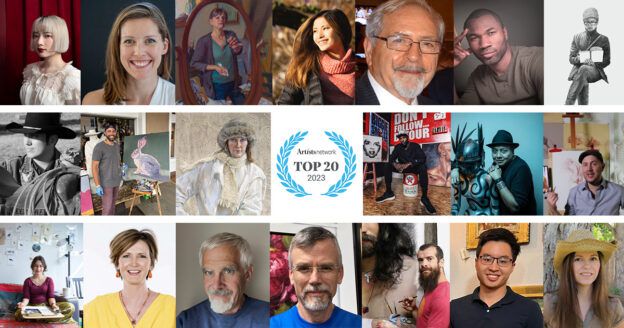
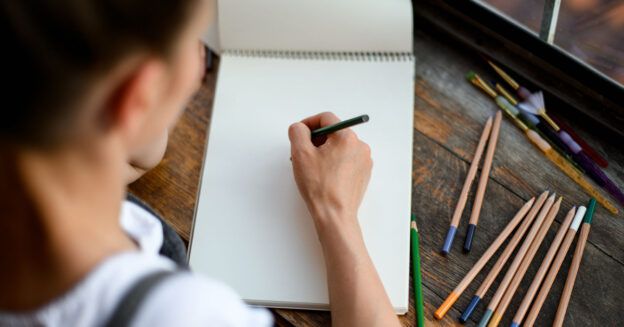
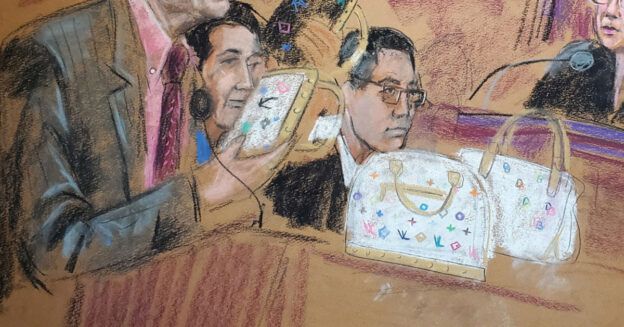
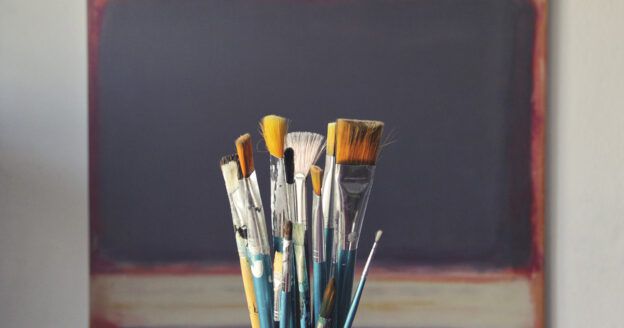
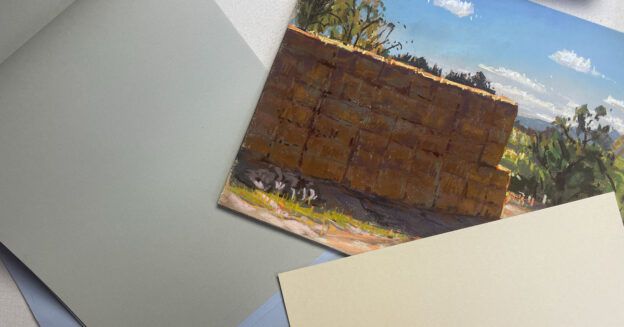
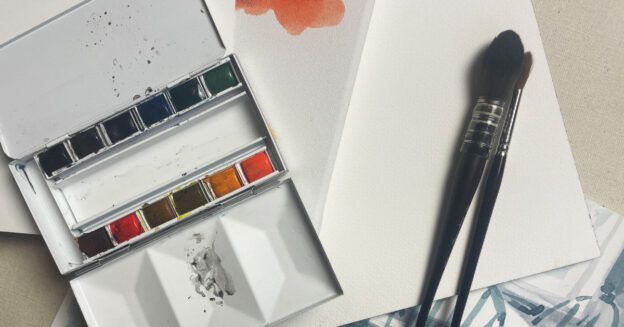
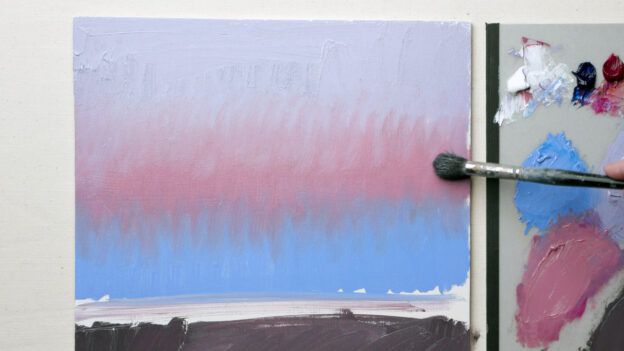
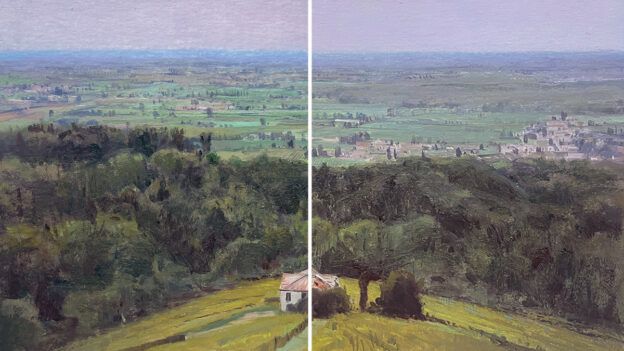
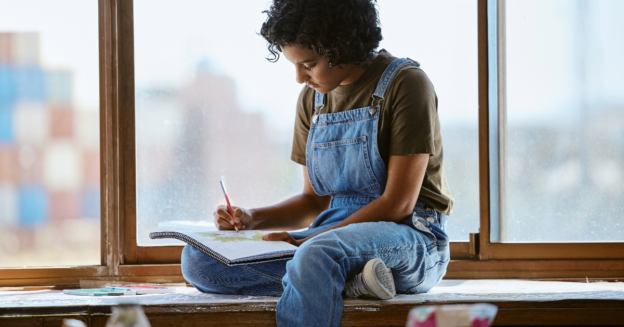
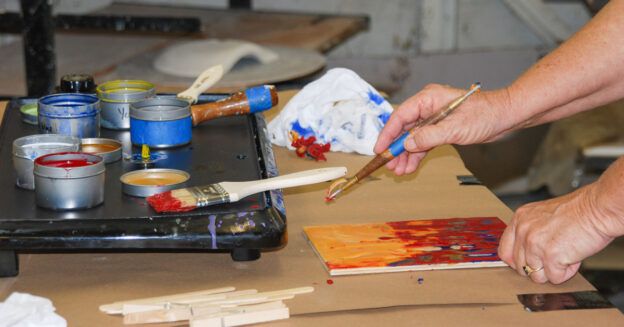
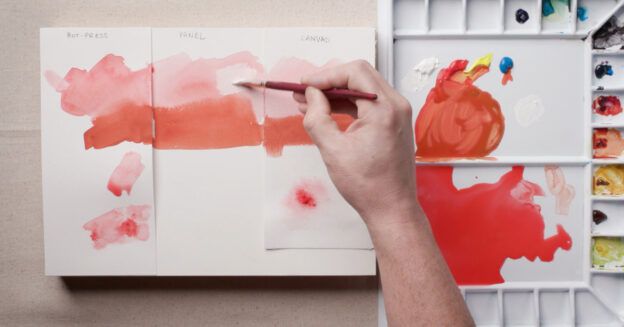
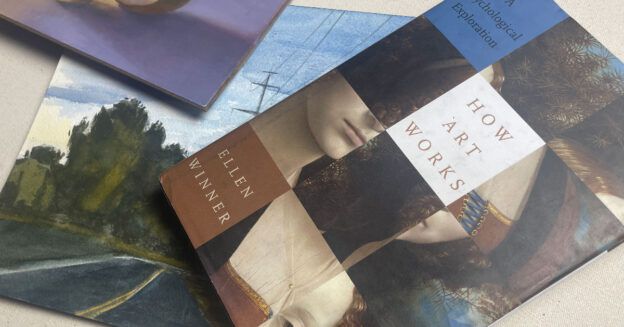
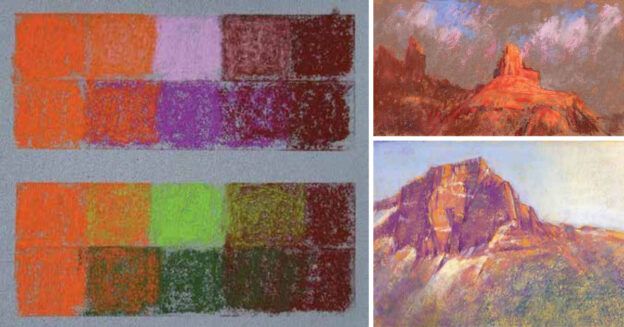
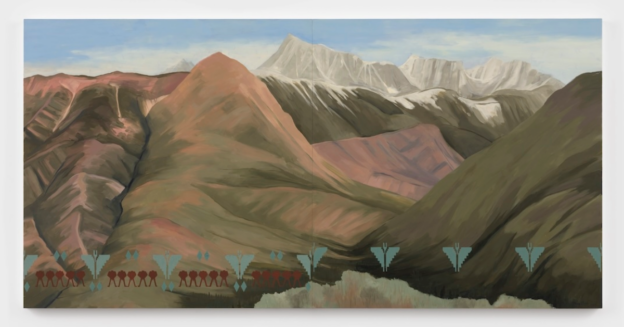
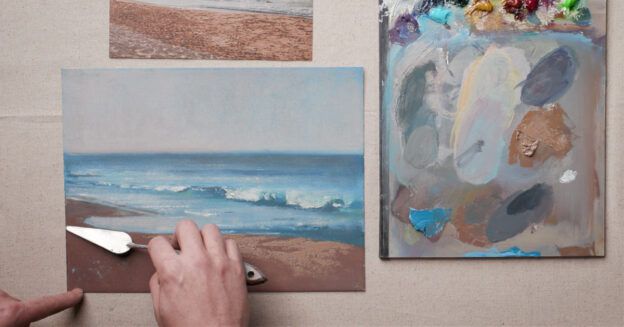
Join the Conversation!